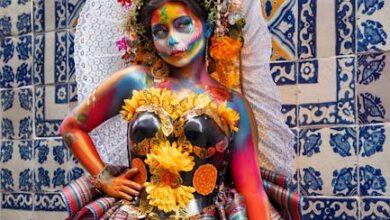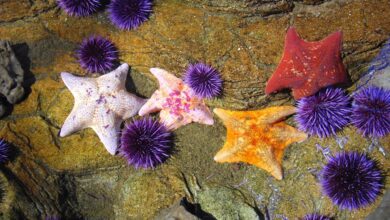How Hong Kong Gave Rise to Labubu

How Hong Kong Gave Rise to Labubu
Estimated reading time: 7 minutes
- Cultivate a Unique Artistic Voice: Kasing Lung’s distinctive illustration style and compelling character narratives were the foundation of Labubu’s appeal. Invest in developing an authentic aesthetic and a universe that resonates with potential collectors. Authenticity is key in a saturated market.
- Engage with and Nurture Community: Early designer toy success relied heavily on word-of-mouth and dedicated collector communities. Actively participate in online forums, attend conventions, and interact with your audience. Building genuine connections can transform casual interest into passionate advocacy.
- Explore Strategic Partnerships and Distribution: While maintaining artistic integrity, consider how collaborations can amplify your reach. Pop Mart’s partnership provided Labubu with unparalleled scale and access to a wider market through innovative distribution like blind boxes. Research partners who align with your vision and can offer complementary strengths.
- The Genesis of Designer Toys: A Hong Kong Phenomenon
- Kasing Lung and the Birth of Labubu
- From Niche Art to Global Pop Culture Icon
- Actionable Steps for Navigating the Creative Collectible Market
- A Real-World Echo of Success
- Conclusion
- Frequently Asked Questions (FAQ)
In the vibrant tapestry of global pop culture, few characters have captured hearts quite like Labubu. With its mischievous grin, pointy ears, and captivating presence, this enigmatic figure has transcended its origins to become a celebrated icon. But beyond its undeniable charm, Labubu embodies a profound narrative: “How Hong Kong gave rise to Labubu and a designer toy movement now shaping global culture.”
This isn’t merely the story of a toy; it’s an exploration of creativity, entrepreneurship, and the unique cultural alchemy of Hong Kong that nurtured an entire artistic genre. From its humble beginnings as an illustrator’s whimsical doodle to its status as a highly sought-after collectible, Labubu’s journey mirrors the trajectory of the broader designer toy phenomenon, proving that art, commerce, and community can converge to create something truly extraordinary.
The Genesis of Designer Toys: A Hong Kong Phenomenon
To understand Labubu, one must first appreciate the fertile ground from which it sprang: Hong Kong in the late 1990s and early 2000s. This era witnessed a significant cultural shift, as local artists and creatives, often inspired by Japanese pop culture and street art, began to push the boundaries of traditional art forms. They saw toys not just as playthings but as canvases for self-expression, limited edition art pieces that could be collected, displayed, and cherished.
Pioneers like Michael Lau, often credited as the “Godfather of Designer Toys,” spearheaded this movement with his “Gardener” series, transforming conventional action figures into highly stylized, collectible art. Other notable figures, including Eric So and Kenny Wong, followed suit, each contributing unique aesthetics and narratives to this burgeoning scene. Hong Kong’s dense urban environment, coupled with its robust manufacturing infrastructure and a population eager for new forms of cultural engagement, created a perfect storm for this artistic revolution.
These early designer toys, often produced in small batches using urban vinyl, quickly gained a cult following. They offered an alternative to mass-produced items, speaking to a desire for authenticity and individuality. The rise of these “art toys” laid the essential groundwork, establishing a vibrant ecosystem where independent artists could thrive, innovate, and eventually, captivate an international audience.
Kasing Lung and the Birth of Labubu
It was into this exciting creative landscape that Kasing Lung emerged. Originally an acclaimed illustrator known for his whimsical and often melancholic monster characters, Lung hailed from Hong Kong but spent significant time honing his artistic voice in Belgium. His illustrations, characterized by a unique blend of childlike innocence and subtle complexity, already possessed a strong narrative quality, making the transition to three-dimensional art toys a natural evolution.
Labubu itself was born from Lung’s existing cast of characters, first appearing in his children’s books as a mischievous yet endearing creature. When Lung began exploring toy design, Labubu, with its distinctive silhouette and expressive face, quickly became a focal point. Its design is deceptively simple: a furry, impish figure with prominent teeth and ears, capable of conveying a wide range of emotions despite its minimalist features. This ambiguity is part of its universal appeal; Labubu can be playful, curious, naughty, or even a little sad, reflecting the multifaceted nature of human emotion.
Initially, Labubu was produced in limited runs, handcrafted and meticulously finished, appealing directly to discerning collectors who appreciated the artistry and scarcity. Its early success was largely driven by word-of-mouth within the designer toy community and appearances at art and toy conventions in Hong Kong and Japan. Collectors were drawn not just to the figure’s aesthetic but also to the storytelling embedded within Lung’s broader universe of monsters, creating a deeper connection than typical collectibles.
From Niche Art to Global Pop Culture Icon
The true explosion of Labubu’s popularity came through strategic partnerships and an embrace of innovative distribution methods. Collaborations with companies like Pop Mart, a Chinese art toy giant, proved to be a game-changer. Pop Mart’s expertise in mass production, marketing, and the “blind box” phenomenon catapulted Labubu from a niche collectible into a global sensation.
The blind box concept, where consumers purchase a sealed box containing a random figure from a series, taps into the thrill of discovery and the desire for completion. It creates an engaging, almost gamified collecting experience that fosters community among enthusiasts who trade, sell, and showcase their finds. This approach, combined with Pop Mart’s extensive retail network across Asia and beyond, introduced Labubu to an exponentially larger audience, including those new to designer toys.
Today, Labubu’s influence extends far beyond the toy shelf. It has permeated fashion, lifestyle products, and digital art. Limited edition drops sell out in minutes, and secondary market prices often skyrocket, indicating its strong cultural currency. From art exhibitions to collaborations with major brands, Labubu exemplifies how a thoughtfully designed character, born from artistic passion in Hong Kong, can become a significant force in shaping contemporary global culture and consumer trends.
Actionable Steps for Navigating the Creative Collectible Market
For aspiring designers, artists, or even just keen observers of this fascinating trend, understanding the dynamics of Labubu’s success offers valuable lessons:
- Cultivate a Unique Artistic Voice: Kasing Lung’s distinctive illustration style and compelling character narratives were the foundation of Labubu’s appeal. Invest in developing an authentic aesthetic and a universe that resonates with potential collectors. Authenticity is key in a saturated market.
- Engage with and Nurture Community: Early designer toy success relied heavily on word-of-mouth and dedicated collector communities. Actively participate in online forums, attend conventions, and interact with your audience. Building genuine connections can transform casual interest into passionate advocacy.
- Explore Strategic Partnerships and Distribution: While maintaining artistic integrity, consider how collaborations can amplify your reach. Pop Mart’s partnership provided Labubu with unparalleled scale and access to a wider market through innovative distribution like blind boxes. Research partners who align with your vision and can offer complementary strengths.
A Real-World Echo of Success
The impact of Hong Kong’s designer toy movement is not limited to Labubu. Consider Kenny Wong’s character, Molly, another Hong Kong creation that rose to international fame through similar channels. Molly, with her pouty lips and distinct artistic styling, also found massive success through blind box distribution and diverse collaborations. This demonstrates a repeatable blueprint for success within the ecosystem Hong Kong helped cultivate, proving that the city’s creative spirit continues to generate global icons beyond just one phenomenon.
Conclusion
Labubu’s ascent from an illustrator’s sketch to a global phenomenon is a testament to the enduring power of creativity and the unique cultural crucible of Hong Kong. It’s a vivid demonstration of how Hong Kong gave rise to Labubu and a designer toy movement now shaping global culture. The city’s blend of artistic freedom, entrepreneurial spirit, and strategic market access provided the perfect environment for a niche art form to flourish into a mainstream sensation.
As Labubu continues to evolve, inspiring new collections, collaborations, and a passionate worldwide fanbase, it stands as a shining example of how art can transcend boundaries, creating shared experiences and fostering a global community around unique, imaginative characters. The story of Labubu is, in essence, the story of Hong Kong’s indelible contribution to contemporary art and pop culture.
Are you a collector or an aspiring designer? Share your favorite designer toy or your own creative journey in the comments below!
Explore the world of designer toys and discover your next collectible today!
Frequently Asked Questions (FAQ)
1. What is Labubu?
Labubu is a popular designer toy character created by Hong Kong illustrator Kasing Lung. It’s known for its mischievous grin, pointy ears, and versatile expressions, making it a beloved collectible and pop culture icon.
2. Who is Kasing Lung?
Kasing Lung is the acclaimed Hong Kong-born illustrator and artist behind Labubu. He is known for his whimsical monster characters and his significant contribution to the designer toy movement, particularly through his collaboration with Pop Mart.
3. How did Hong Kong influence the designer toy movement?
Hong Kong in the late 1990s and early 2000s provided a fertile ground for designer toys. Its unique blend of artistic freedom, entrepreneurial spirit, robust manufacturing, and a population open to new cultural forms allowed artists like Michael Lau to pioneer the movement, establishing a vibrant ecosystem for art toys.
4. What is the “blind box” phenomenon?
The blind box phenomenon is a marketing and distribution strategy where consumers buy sealed boxes containing a random figure from a series. This creates an element of surprise and encourages collecting, trading, and community engagement, significantly boosting the popularity of characters like Labubu and Molly.





